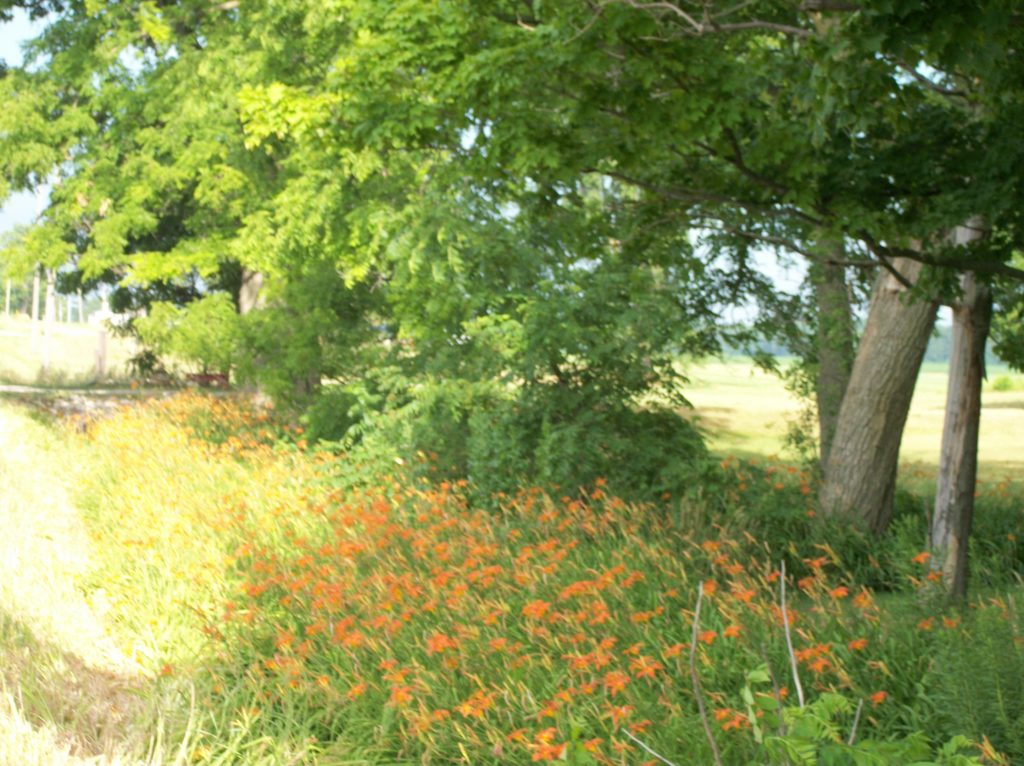It’s Still Just Dirt, The Tillsonburg News – May 2019
by Angela Lassam
All gardeners visit nurseries this time of year to buy plants to fill a spot or replace a dead one. Many of them are great to look at and appear exotic but some are very invasive and need to be used in a spot that needs ground cover or at the back of a garden where it can be controlled. Alternatively, the plant can be buried in a large container which you can lift to check that the roots have not escaped. It is more advisable to buy native plants which will thrive just as well.
Here are a few of the listed plants suggested to leave where they are growing in the wild or in the nursery.
- Leafy Spurge (Euphorbia esula) classified as a noxious weed grows rapidly through root system and a heavy seed producer.
- Oxeye Daisy (Chrysanthemum leucanthemum) is a single small daisy and would fill a space but beware.
- Purple Loosestrife is very showy with colorful spikes but can multiply quickly. Often found in clumps in ditches.
- Himalayan Balsam (Poor man’s orchid or Policeman’s helmet) was imported from New Zealand and Asia. It is a very pretty purple flower and low growing but is very prolific.
- Creeping Bellflower as implies has a pretty blue flower but will travel far even under cement and appear in any cracks.
- Trumpet Vine will travel underground and pop up anywhere including your lawn year after year.
- Lily of the valley is very fragrant, pretty and one of the early flowering plants but will strangle all around it.
- We all know the “ditch” lilies on the roadside and they are a bright display of color but let them stay where they are. Yes they are very invasive like so many roadside flowers.
- Many pond plants are invasive. Water hyacinth, flowering rush, yellow flag and lotus are best avoided for a small pond. Do not throw them out into lakes or ditch waterways.
- More information on these and others can be found on www.canadianinvasives.ca.
There is more concern today for any invasion of plants in natural habitat areas. Invasive plants pose a hazard to the environment and human health. Natural waterways get clogged causing flooding and a detriment for agriculture in general.
For people who have contact with any invasive plant there can be many consequences. Severe breathing problems and skin scarring are just some impacts on people. Many plants have a sap which produces an allergic rash. Giant hogweed (Heracleum mantegazzianum) can cause severe and permanent dermatitis from the toxic oils in its hairs and sap. Professional removal is suggested if it arrives on your property. It is advisable to wear gloves when handling any unknown plants.
For interest Milkweed is a plant that we are encouraged to grow for the Monarch butterfly. The butterfly has no predators because it feeds on the sap in the leaves. This same sap is poisonous and can cause a rash and if a very small amount gets into the eye by rubbing after handling the plant it gives extreme pain and can cause blindness. Always wear gloves and be extremely careful. The leaves even dry in hay can be toxic to animals.
I hope this knowledge helps you to be aware and enjoy your gardens.
The next meeting for the Tillsonburg Horticultural Society will be on Tuesday June 4th @ 7.30 p.m. in the Senior Centre, Tillsonburg Community Complex. The speaker will be Jay Cossey, a photojournalist who will share stories of butterflies – “the miracle of metamorphosis” with a collection of butterflies and moths.
Everyone welcome. Non-members $2 per meeting or join for extra benefits. Visit us on our website at www.tillsonburghorticultural.ca or Facebook Tillsonburghorticultural for up to date news.
